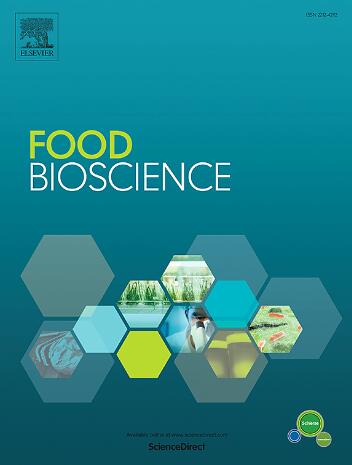Foxtail millet oil alleviates high-fat diet-induced obesity in mice by targeting AMPK-PPAR pathway and regulating gut microbiota
IF 4.8
1区 农林科学
Q1 FOOD SCIENCE & TECHNOLOGY
引用次数: 0
Abstract
Foxtail millet oil (FMO) has demonstrated possible health advantages. This study investigated the anti-obesity characteristics of FMO, elucidating its underlying mechanisms. GC-MS analysis revealed that FMO is rich in linoleic acid, comprising up to 65.05 % of its fatty acid content. Supplementation with FMO lowered fat accumulation and body weight in high-fat diet-induced obese mice. Additionally, it improved blood glucose levels, lipid profiles, and insulin sensitivity while alleviating oxidative stress, chronic inflammation, and organ damage. Transcriptomic analysis established the AMPK-PPAR signaling pathway as a crucial mechanism through which FMO regulates glucose and lipid metabolism, with the upregulation of Cyp7a1 and Pck1 and the downregulation of Acaca, Fasn, Scd1, and Plin2. FMO modulated gut microbiota, thereby increasing the abundance of the norank_f__Bacteroidales_S24-7_group and Allobaculum, associated with bile acid metabolism and reduced hepatic cholesterol accumulation. These results showed that FMO is a promising functional food source for managing obesity and metabolic disorders.

狐尾小米油(FMO)已被证明具有可能的健康优势。本研究调查了 FMO 的抗肥胖特性,阐明了其潜在机制。气相色谱-质谱分析显示,FMO富含亚油酸,占其脂肪酸含量的65.05%。补充 FMO 可降低高脂饮食诱导的肥胖小鼠的脂肪积累和体重。此外,它还能改善血糖水平、血脂状况和胰岛素敏感性,同时减轻氧化应激、慢性炎症和器官损伤。转录组分析证实,AMPK-PPAR 信号通路是 FMO 调节葡萄糖和脂质代谢的重要机制,它上调 Cyp7a1 和 Pck1,下调 Acaca、Fasn、Scd1 和 Plin2。FMO 调节了肠道微生物群,从而增加了 norank_f__Bacteroidales_S24-7_group 和 Allobaculum 的丰度,这与胆汁酸代谢和减少肝脏胆固醇积累有关。这些结果表明,FMO 是一种很有前景的控制肥胖和代谢紊乱的功能性食物来源。
本文章由计算机程序翻译,如有差异,请以英文原文为准。
求助全文
约1分钟内获得全文
求助全文
来源期刊

Food Bioscience
Biochemistry, Genetics and Molecular Biology-Biochemistry
CiteScore
6.40
自引率
5.80%
发文量
671
审稿时长
27 days
期刊介绍:
Food Bioscience is a peer-reviewed journal that aims to provide a forum for recent developments in the field of bio-related food research. The journal focuses on both fundamental and applied research worldwide, with special attention to ethnic and cultural aspects of food bioresearch.
 求助内容:
求助内容: 应助结果提醒方式:
应助结果提醒方式:


